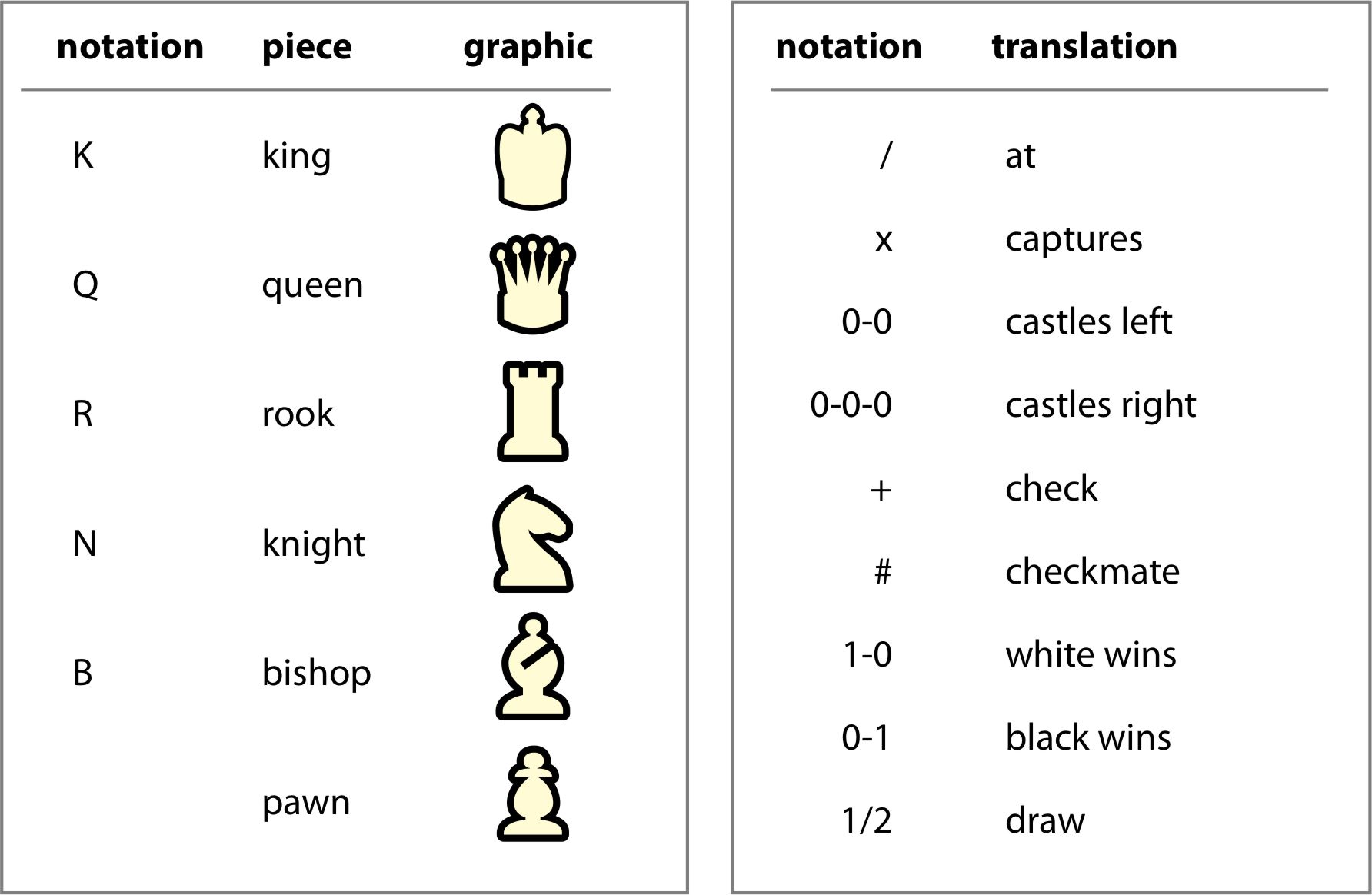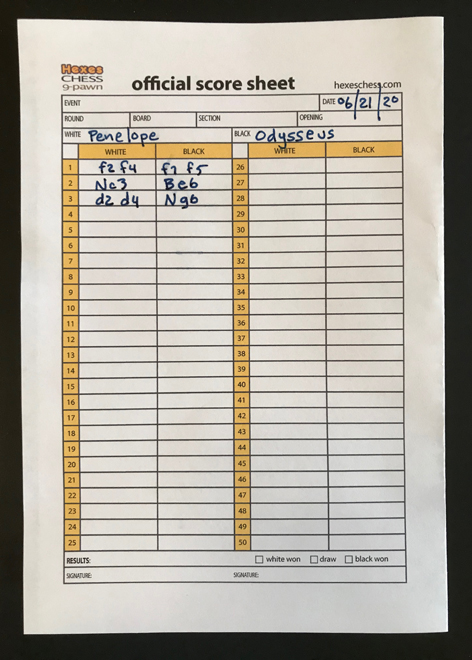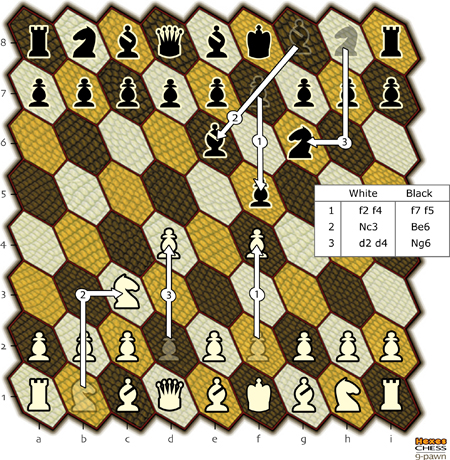|
|
Notation
Chess notation is a method for recording a chess match using symbols. (See notation key below.) For all pieces except pawns, write a simple chess move by starting with the piece's letter symbol, followed by its destination, as in "Na4", which means "knight moves to a4". While the other pieces get their own letter (K,Q,R,N,B), the pawn gets no letter-symbol. A pawn move is recorded by writing its starting location, followed by its destination, as in "b4 c5", which means "pawn at b4 moves to c5".
Notation Key

Which Knight or Rook Is Moving or Capturing?
When both of a player's rooks or knights can move to the same location, you must identify which rook or knight is moving by following the letter-symbol of the moving piece with a foreslash "/" followed by its location, as in "R/f1 c4" which means the rook at f1 moves to c4. (See below for other examples.)

Noting a Pawn Promotion
To note a pawn promotion, simply write the letter-symbol of the piece it promotes to at the end of the notation. (See below.)

Recording a Match
Below is a Hexes Chess score sheet recording the first six moves of this match between Penelope and Odysseus.

The illustration below shows the first six moves of the game recorded on the scoresheet above.
 
1) The white pawn at f2 moves to f4; the black pawn at f7 moves to f5.
2) The white knight moves to c3; the black bishop moves to e6.
3) The white pawn at d2 moves to d4; the black knight moves to g6.
|
|





